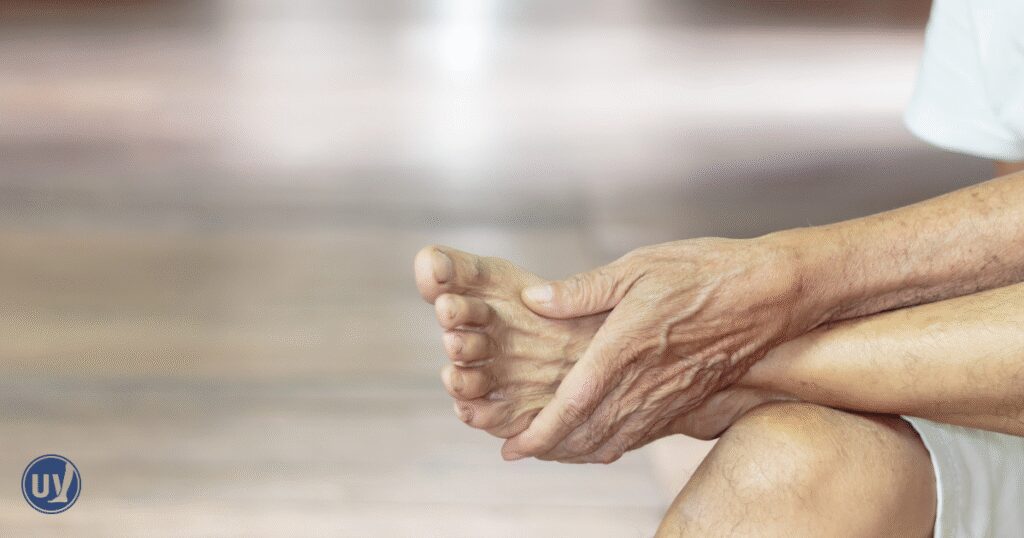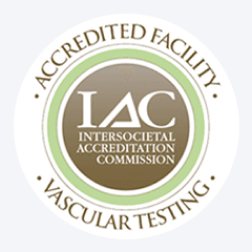Experiencing cold and numb legs can be unsettling. These sensations may indicate a serious underlying condition, such as peripheral artery disease, or PAD. PAD occurs when fatty deposits build up inside the arteries, reducing blood flow to the legs. Over time, restricted circulation can cause discomfort, numbness, tingling, and a persistent cold feeling in your lower extremities.
While lifestyle adjustments like regular exercise, a balanced diet, and quitting smoking can help improve circulation, medical intervention often provides faster and more effective relief. United Vein & Vascular Centers offers advanced treatment options for PAD, helping patients restore healthy blood flow, reduce symptoms, and improve their quality of life.
Understanding the causes of cold and numb legs and seeking timely medical care can make a significant difference in preventing complications and enhancing your overall health.
Why Are My Legs Always Cold and Numb?
Cold and numb legs can be caused by several health conditions, but PAD is a common contributor, especially in older adults or individuals with risk factors such as diabetes, high blood pressure, high cholesterol, and smoking.
PAD develops when plaque accumulates in the walls of arteries, narrowing them and restricting blood flow. When the legs do not receive sufficient oxygen-rich blood, they can feel cold and may also experience numbness. The sensation of numbness is often accompanied by tingling or a “pins and needles” feeling. In some cases, patients may find it difficult to sense pain in the affected legs, increasing the risk of unnoticed injuries.
Numbness is frequently more noticeable when resting, such as while lying down. This happens because gravity no longer aids blood flow as it does when standing or walking. Without adequate circulation, oxygen and nutrients cannot reach the tissues effectively, leading to cold, numb, or tingling sensations.
Other conditions, like peripheral neuropathy, may also contribute to numb legs. Peripheral neuropathy affects the nerves and can occur due to diabetes or other nerve-damaging conditions. While neuropathy affects the nerves themselves, PAD is a circulatory issue, so it is important to distinguish between the two for proper diagnosis and treatment.
Common Symptoms Associated with PAD
People with PAD may experience a range of symptoms beyond cold and numb legs. The most common include:
- Pain or cramping in the legs while walking or exercising, often relieved by rest
- Weakness in the legs
- Changes in skin color or temperature in the feet or lower legs
- Slow-healing sores or wounds on the toes, feet, or legs
- A tingling or burning sensation in the feet
Recognizing these symptoms early and consulting a healthcare professional can prevent further complications, including severe tissue damage or even limb loss in advanced cases.
How Lifestyle Changes Can Help
Making certain lifestyle adjustments can support circulation and improve leg health. Regular physical activity, such as walking or low-impact exercises, encourages blood flow and strengthens the muscles that help pump blood to the lower extremities.
A balanced diet rich in fruits, vegetables, lean proteins, and whole grains helps reduce cholesterol and maintain healthy blood vessels. Avoiding smoking is particularly important because tobacco use accelerates plaque buildup in arteries, worsening PAD symptoms.
While these measures are helpful, they are often most effective when combined with medical treatment for PAD.

PAD Treatment at United Vein & Vascular Centers
United Vein & Vascular Centers provides both surgical and nonsurgical treatments to address PAD and its symptoms, including numbness and cold sensations in the legs. Our board-certified vascular specialists evaluate each patient individually and create a personalized care plan.
Angioplasty is a minimally invasive procedure that opens clogged arteries. A catheter with a balloon tip is guided to the blocked section of the artery. Inflating the balloon stretches the artery walls, increasing blood flow. This procedure can quickly reduce symptoms such as leg pain, numbness, and coldness.
Atherectomy is a surgical procedure that removes plaque from the artery walls. Using a laser-tipped catheter and a special dye to locate blockages, the surgeon eliminates the buildup, restoring proper circulation and reducing the risk of further complications.
In addition to these procedures, patients may benefit from medications to improve blood flow, reduce cholesterol, or prevent clotting. Lifestyle modifications are also recommended to support long-term vascular health.
Recovery and Aftercare
After treatment, patients are encouraged to follow their doctor’s instructions closely. Monitoring the legs for changes in color, temperature, or sensation is important. Regular follow-up appointments allow physicians to track progress and make adjustments to treatment as needed.
Engaging in moderate exercise and maintaining a heart-healthy diet supports healing and reduces the likelihood of PAD progression. Staying informed and proactive about your vascular health is key to maintaining comfort and mobility in the long term.
Take the Next Step Toward Healthier Legs
Experiencing cold or numb legs should not be ignored. Peripheral artery disease can affect your quality of life, but effective treatments are available. United Vein & Vascular Centers offers comprehensive care for PAD, combining expert procedures, personalized treatment plans, and compassionate support.
Schedule a consultation today to explore treatment options and take control of your vascular health. Our specialists are ready to help you improve circulation, reduce symptoms, and enjoy a more comfortable and active lifestyle.
Frequently Asked Questions
If left untreated, PAD can lead to permanent tissue damage due to reduced blood flow. Early intervention and treatment can often restore sensation and prevent serious complications.
Many patients notice improvement in circulation and reduced numbness soon after the procedure, though full recovery may take a few weeks. Your physician will provide guidance based on your specific case.
Yes. Lifestyle changes, including exercise, diet modifications, and smoking cessation, can help manage symptoms. Medications may also be prescribed to improve blood flow and reduce the risk of complications.


